Decalin is an example of fused bicyclic systems where two six membered rings share common C-C bond. There are two possible arrangements : trans and cis-decalin.
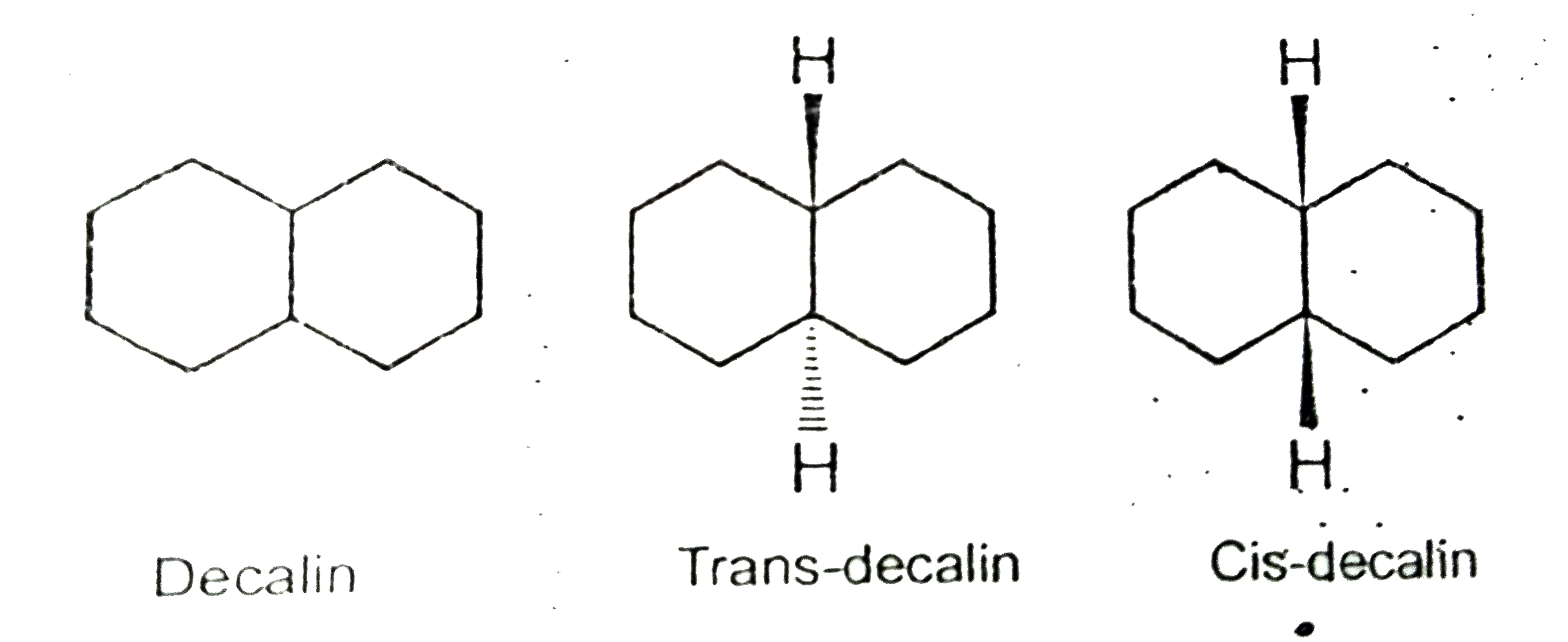
(i) Draw cis and trans decalin using the chair form for these species
(ii) Which isomer is more stable? Give explanation.
Topper's Solved these Questions
- BOOK - AAKASH INSTITUTE ENGLISHCHAPTER - HYDROCARBONSEXERCISE - Try yourself78videos
HYDROCARBONS
- BOOK - AAKASH INSTITUTE ENGLISHCHAPTER - HYDROCARBONSEXERCISE - Exercise33videos
HYDROCARBONS
- BOOK - AAKASH INSTITUTE ENGLISHCHAPTER - HYDROCARBONSEXERCISE - SECTION-I SUBJECTIVE QUESTIONS9videos
HYDROCARBONS
- BOOK - AAKASH INSTITUTE ENGLISHCHAPTER - HALOALKANES AND HALOARENES EXERCISE - ASSIGNMENT SECTION -D15videos
HALOALKANES AND HALOARENES
- BOOK - AAKASH INSTITUTE ENGLISHCHAPTER - HYDROGENEXERCISE - ASSIGNMENT (SECTION - D) (Assertion-Reason Type question)15videos
HYDROGEN
Similar Questions
Stereoisomerism occurs when the bond connectivity is same but the spatial arrangement of more than one type is possible. Stereoisomerism finds vast use in orgaic chemistry, mainly biochemistry as all the biomolecules, are generally stereospecific in their actions. Stereoisomerism in limited not only to organic compounds but also to inorganic compounds, mainly in co-ordination complexes. Stereoisomers include cis and trans isomers, chiral isomers, compound wilth different conformation of chelate rings and other isomers that differ only in the geometry of attachement of the metal ion.
Select the incorrect statement:View SolutionStereoisomerism occurs when the bond connectivity is same but the spatial arrangement of more than one type is possible. Stereoisomerism finds vast use in orgaic chemistry, mainly biochemistry as all the biomolecules, are generally stereospecific in their actions. Stereoisomerism in limited not only to organic compounds but also to inorganic compounds, mainly in co-ordination complexes. Stereoisomers include cis and trans isomers, chiral isomers, compound wilth different conformation of chelate rings and other isomers that differ only in the geometry of attachement of the metal ion.
Select the correct option for tertraamminedichlorocobalt (III) ion, the trans isomerView Solution
Knowledge Check
- Question 1 - Select One
Cyclonexane exists its two chair conformations in rapid equilrium at room temperature.
Each carbon atom on a cyclohexane ring has one axial and one equatorial hydrogen. Ring-flipping converts axial II's to equatorial H's and vice-versa.
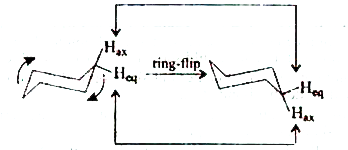
In substituted cyclohexane, groups larger than hydrogen are more stable in the equatorial position.
The cis isomer has two groups on the same side of the ring, either both up or both down.
The trans isomer has two groups on opposite side of the ring one up and one down.
Find out most stable conformer of cis-3-fluorocyclohexanol.A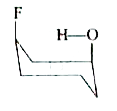 B
B C
C D
D
- Question 2 - Select One
Cyclohexane exists its two chair conformations in rapid equilrium at room temperature.
Each carbon atom on a cyclohexane ring has one axial and one equatorial hydrogen. Ring-flipping converts axial II's to equatorial H's and vice-versa.
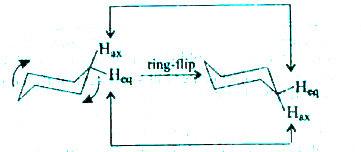
In substituted cyclohexane, groups larger than hydrogen are more stable in the equatorial position.
The cis isomer has two groups on the same side of the ring, either both up or both down.
The trans isomer has two groups on opposite side of the ring one up and one down.
Which of the following is most stable conformer of 1,2-dichlorocyclohexane?A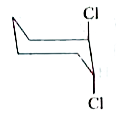 B
B C
C DAll have equal stability
DAll have equal stability - Question 3 - Select One
Cyclonexane exists its two chair conformations in rapid equilrium at room temperature.
Each carbon atom on a cyclohexane ring has one axial and one equatorial hydrogen. Ring-flipping converts axial II's to equatorial H's and vice-versa.
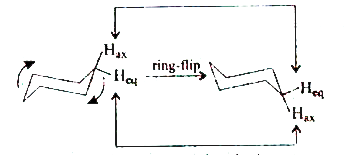
In substituted cyclohexane, groups larger than hydrogen are more stable in the equatorial position.
The cis isomer has two groups on the same side of the ring, either both up or both down.
The trans isomer has two groups on opposite side of the ring one up and one down.
Find out most stable substituted cyclohexane among the following:A B
B C
C D
D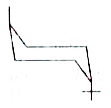
Borane is an electron deficient compound. It has only six valence eletons, so the boron atom lacks an octet. Acquiring an octet is the driving force for the unusual bonding structure found in boron compounds. As an electron deficient compound, BH3 is a strong electrophile, capable of adding to a double bond. This hydroboration of double bond is though to oC Cur in one step, with the boron atom adding to the less highly substituted end of the double bond. In transition state, the boron atom withdraws electrons from the pi bond and the carbon at theother end of the double bond acquires a partial positive charge. This positive charge is more stable on the more highly subsituted carbon atom. The second step is the oxidation of boron atom, removing it from carbon and replacing it with hydroxyl group by using H2O2/OH¯¯¯¯¯...
The simultaneous addition of boron and hydrogen to the double bond leads to a syn addition. Oxidation of the trialkyl borane replaces boron with a hydroxyl group in the same stereochemical position. Thus, hydroboration of alkenen is an example of steropecific reaction, in which different steroisomers of starting compounds react to give different steroisomers of the product.
CH3−CH3∣C∣CH3−CH=CH2 (i)BH3/THF−−−−−−−−−−→(ii)H2O2/OH¯¯¯¯¯..Z.
Z is :View SolutionBorane is an electron deficient compound. It has only six valence eletons, so the boron atom lacks an octet. Acquiring an octet is the driving force for the unusual bonding structure found in boron compounds. As an electron deficient compound, BH3 is a strong electrophile, capable of adding to a double bond. This hydroboration of double bond is though to oC Cur in one step, with the boron atom adding to the less highly substituted end of the double bond. In transition state, the boron atom withdraws electrons from the pi bond and the carbon at theother end of the double bond acquires a partial positive charge. This positive charge is more stable on the more highly subsituted carbon atom. The second step is the oxidation of boron atom, removing it from carbon and replacing it with hydroxyl group by using H2O2/OH¯¯¯¯¯...
The simultaneous addition of boron and hydrogen to the double bond leads to a syn addition. Oxidation of the trialkyl borane replaces boron with a hydroxyl group in the same stereochemical position. Thus, hydroboration of alkenen is an example of steropecific reaction, in which different steroisomers of starting compounds react to give different steroisomers of the product.
CH3−CH3∣C∣CH3−CH=CH2 (i)BH3/THF−−−−−−−−−−→(ii)H2O2/OH¯¯¯¯¯..Z.
Z is :View SolutionRedox reactions play a pivotal role in chemistry and biology. The values standard redox potential (Eo) of two half cell reactions decided which way the reaction is expected to preceed. A simple example is a Daniell cell in which zinc goes into solution and copper sets deposited. Given below are a set of half cell reactions ( acidic medium ) along with their Ec−(V with respect to normal hydrogen electrode ) values. Using this data, obtain correct explanations for Question.
I2+2e−→2Ic−, Ec−=0.54
Cl2+2e−→2Clc−, Ec−=1.36
Mn3++e−→Mn2+, Ec−=1.50
Fe3++e−→Fe2+, Ec−=0.77
O2+4H⊕+4e−→2H2O, Ec−=1.23
Sodium fusion extract obtained from aniline on treatment with iron (II) sulphate and H2SO4 in the presence of air gives a Prussion blue precipitate. The blue colour is due to the formation ofView SolutionA condition where an individual heterozygous for two pairs of linked genes (AaBb) possesses the two dominant genes on one homologous chromosomes pair and two recessive on the other it is said to be
(a) Cis-arrangement
(b) Trans-arrangement
(c) Partly cis partly trans
(d) More than one option is correctView SolutionMonomers are simple molecules, which combine with each other to form polymers. Each polymer has a repeating structural unit. Polymers formed from the same type of monomers are called homopolymers and if two or more different repeating units (monomers) make up the polymer, it is known as a copolymer. Both homopolymers and copolymers may be formed either by addition or condensation reactions. Alkenes adn dienes polymerize by addition (chain growth) mechanism involving carbocations, carbanions or free radical intermediates. Dienes (chloroprene, isoprene, etc) polymerize by 1, 4-addition mechanism to give cis-or trans-polymers. Natural rubber is however, cis-polyisoprene. Natural rubber is quite soft and flexible but these properties can be improved by a process called vulcanization. In contrast, bifunctional monomer molecules undergo condensation or step-growth polymerization. Polymers which can be heated and reshaped as many times as desired are called thermoplastics (polythene, polystyree, PVC teflon, etc). While those which can be heated only once to give a particular shape are called thermosetting polymers (Bakelite, Melmac etc)
Which of the following are examples of homopolymers?View Solution

